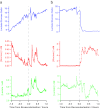Online rapid sampling microdialysis (rsMD) using enzyme-based electroanalysis for dynamic detection of ischaemia during free flap reconstructive surgery
- PMID: 23435450
- PMCID: PMC3608874
- DOI: 10.1007/s00216-013-6770-z
Online rapid sampling microdialysis (rsMD) using enzyme-based electroanalysis for dynamic detection of ischaemia during free flap reconstructive surgery
Abstract
We describe an enzyme-based electroanalysis system for real-time analysis of a clinical microdialysis sampling stream during surgery. Free flap tissue transfer is used widely in reconstructive surgery after resection of tumours or in other situations such as following major trauma. However, there is a risk of flap failure, due to thrombosis in the flap pedicle, leading to tissue ischaemia. Conventional clinical assessment is particularly difficult in such 'buried' flaps where access to the tissue is limited. Rapid sampling microdialysis (rsMD) is an enzyme-based electrochemical detection method, which is particularly suited to monitoring metabolism. This online flow injection system analyses a dialysate flow stream from an implanted microdialysis probe every 30 s for levels of glucose and lactate. Here, we report its first use in the monitoring of free flap reconstructive surgery, from flap detachment to re-vascularisation and overnight in the intensive care unit. The on-set of ischaemia by both arterial clamping and failure of venous drainage was seen as an increase in lactate and decrease in glucose levels. Glucose levels returned to normal within 10 min of successful arterial anastomosis, whilst lactate took longer to clear. The use of the lactate/glucose ratio provides a clear predictor of ischaemia on-set and subsequent recovery, as it is insensitive to changes in blood flow such as those caused by topical vasodilators, like papaverine. The use of storage tubing to preserve the time course of dialysate, when technical difficulties arise, until offline analysis can occur, is also shown. The potential use of rsMD in free flap surgery and tissue monitoring is highly promising.
Figures







References
-
- Parkin MC, Hopwood SE, Boutelle MG, Strong AJ. Resolving dynamic changes in brain metabolism using biosensors and on-line microdialysis. Trend Analy Chem. 2003;22:487–497. doi: 10.1016/S0165-9936(03)00912-9. - DOI
-
- Hashemi P, Bhatia R, Nakamura H, et al. Persisting depletion of brain glucose following cortical spreading depression, despite apparent hyperaemia: evidence for risk of an adverse effect of Leo’s spreading depression. J Cereb Blood Flow Metab. 2009;29:166–75. doi: 10.1038/jcbfm.2008.108. - DOI - PubMed
Publication types
MeSH terms
Substances
Grants and funding
LinkOut - more resources
Full Text Sources
Other Literature Sources

